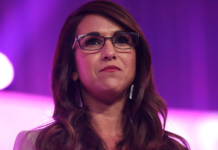Bernie Sanders had a good Saturday, when he swept caucuses in Washington, Hawaii, and Alaska. He ended the night with 104 delegates to Hillary Clinton’s 38. Though Clinton maintains a 230 delegate lead, Sanders’ sweep dispelled the notion that Hillary Clinton has locked the nomination.
America’s mainstream media, though, is quick to peddle another narrative: the minimization of people of color in the Sanders campaign. News outlets and cable stations have fixated Sanders’ supposed lack of diverse support, preferring to typecast him as a monochromatic candidate. Twitter let it rip with #BernieMadeMeWhite.
https://twitter.com/joshismadd/status/714269670895845377
This isn't a picture of two friends, it's actually a before and after voting for Bernie pic. #BernieMadeMeWhite pic.twitter.com/lHH9QJvTfB
— DollyPartonSocialism ? (@DPsocialism) March 27, 2016
Like any other chapter of American history, people of color have played an integral role in the Sanders campaign. The media does a disservice to the public when turns a blind eye to the diversity within Sanders’ ranks. It’s ignoring a fixture of Democratic politics: no nomination contest since FDR has been a racial monolith. Bernie Sanders’ candidacy is no different.
More 140-character satire, loaded with the internet’s sass and sarcasm, would benefit this 2016 election. The hashtag highlights Sanders’ devoted following among young voters, but just because Twitter lauds the Sanders campaign’s diversity doesn’t mean that the actual demographics do.
The Road Ahead
Sanders is riding a groundswell of momentum after Saturday night. However, that doesn’t make the road ahead any easier. Caucuses favor strongly ideological candidates with devout supporters. Because caucusing turns into a lengthy process, sometimes with multiple rounds of voting, candidates who pull from an über-dedicated base tend to perform better.
Of the upcoming states, only two, North Dakota and Wyoming, are caucuses. The rest are primaries, territory where Clinton carries an edge. Though #BernieMadeMeWhite allowed some Bernie fans to vent, it didn’t address the underlying weaknesses in Sanders’ campaign: he underperforms with minorities, and he underperforms in open primaries.
Take Arizona, where voters went to the polls on March 22. Arizona synthesizes the worst of the worst for the Sanders camp: an open primary and a diverse electorate. Sanders only managed to gain 40 percent of the vote to Clinton’s 58 percent. That’s paltry compared to the 73 percent of the vote Sanders won in Washington. To clinch the nomination, Sanders will have to do a lot better.
Well this is awkward @CNN #berniemademewhite pic.twitter.com/PuoIhg9cu0
— Internet Palace (@InternetPalace) March 27, 2016
"@BernieSanders cant win diverse states", except 3 of the 10 most diverse in the US that he won by LANDSLIDES yesterday #BernieMadeMeWhite
— Angry Bernie Sanders (@AngrySenSanders) March 27, 2016
Regardless, the media has played the Democratic nomination contest as a shoo-in for Hillary Clinton. The weekend’s caucuses have shown how far that narrative diverges from reality. Statistically, a Sanders nomination, not to mention a Sanders presidency, is still a long-shot. But if Bernie continues to galvanize support from young idealistic voters, and if he can get those voters to the polls, this might just be it.
Really, #BernieMadeMeWhite might be the medicine Sanders needs. If Sanders wants to gain ground in primary contests with Clinton, a diverse base is a must. Showcasing his campaign’s diversity, and supplementing that with his track record as a Civil Rights advocate and social justice campaigner, could push him over the top.
Featured image courtesy of DonkeyHotey/Flickr under an Attribution Creative Commons License.




